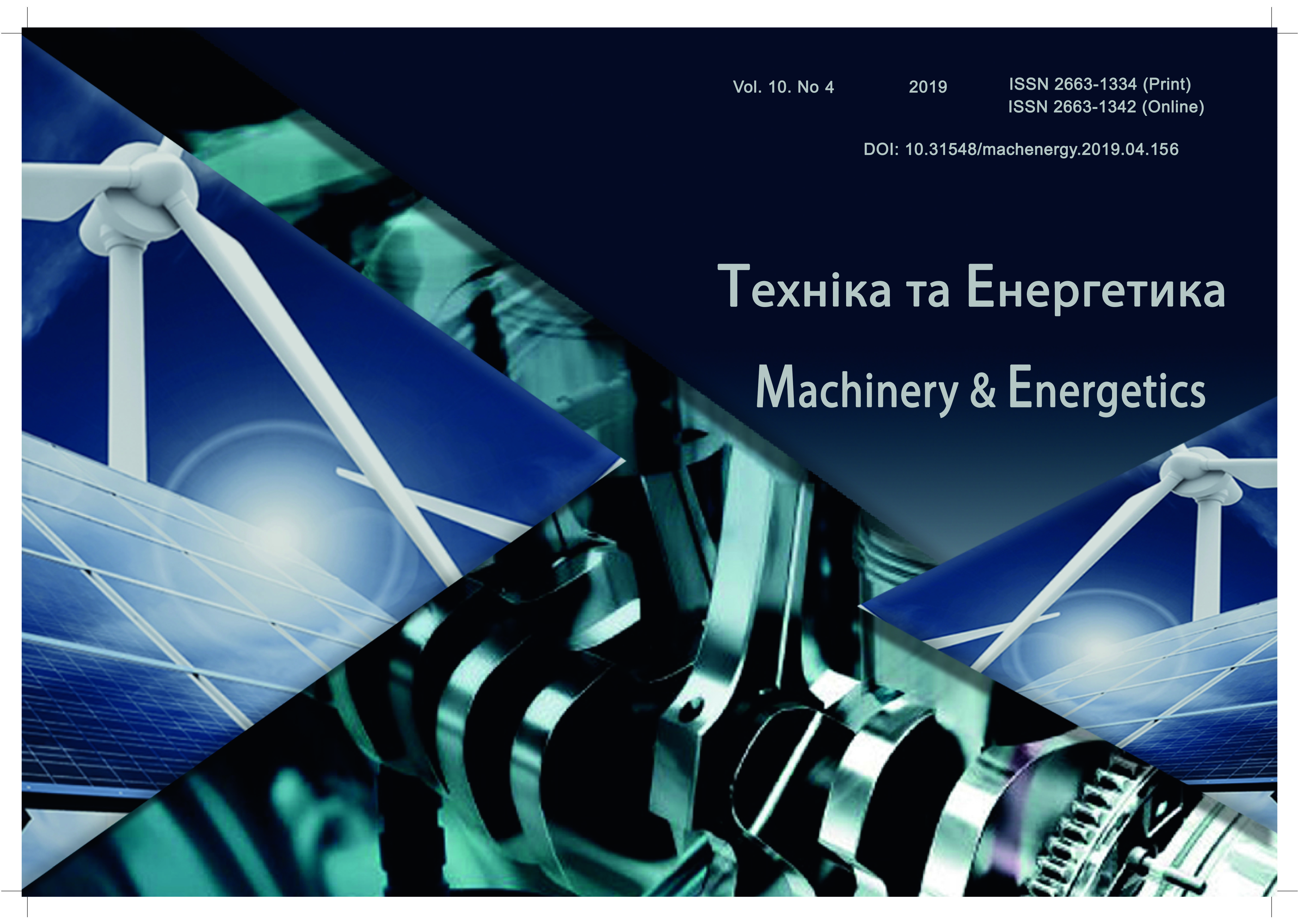Determination of characteristics of screw loading when transporting bulk materials
DOI:
https://doi.org/10.31548/machenergy2019.04.079Keywords:
screw, screw transport technology systems, load, torque value, particle.Abstract
The purpose of the study is to determine the nature of the load on the auger along its entire length and to derive an analytical dependence of determining the amount of torque on the auger taking into account the features of the load, inaccuracy of the manufacture of elements of the screw mechanism and friction in the supports. The object of the study is the technological process of transportation of bulk cargo by screw conveyors. The subject of the study is the regularity of the course of the transportation process and the nature of loading on the auger along its entire length.
The nature of the load on the auger along its length in the screw conveyor is established. The analytical dependence of determination of the real value of the torque value on the auger is deduced, taking into account the features of the load, the inaccuracy of the manufacture of the screw transport-technological system and friction in the supports. A number of dependencies of the magnitude of the torque on the auger with the set load movement on various parameters are determined and constructed.
Results: the nature of the load on the auger along its entire length is established and the analytical dependence of the determination of the torque value on the auger is deduced, which can be widely used in the design of screw transport and technological systems.
References
Grigoryev A. M. (1972). Screw conveyors. Moscow. Mechanical Engineering, 1972. 184.
Herman H. (1975). Screw mechanisms in the technology of Germany; H. Herman. [translated with him.]. L.: Chemistry, 230.
Gevko B. M. (1989). Screw feeders of agricultural machines. B.M. Gevko, R.M. Rohatynsky. Lviv: Higher School, Lviv Publishing House. Univ. 256.
Rogatinsky R. M. (1997). Mechanical-technological bases of interaction of screw working bodies with raw materials of agricultural production: dis. Doctor of Engineering Sciences: 05.20.01, 05.05.05. Rogatinsky Roman Mikhailovich. Kyiv. 502.
Gevko I. B. (2008). Screw transport-technological mechanisms: calculation and design. Ternopil: Ivan Pulyuy TSTU. 307.
Pilipaka S. F. (2018). Particle motion on a helical conoid bounded by a vertical rough cylinder. S.F. Pilipaka, M.B. Clandius, TA Kresan. Bulletin of the Kherson National Technical University. Kherson, No. 4 (67). 20-30.
Serhii Pylypaka, Mykola Klendii, Tetyana Kremets, Oleksandra Klendii (2018). Particle Motion over the Surface of a Cylinder, which Performs Translational Oscillations in a Vertical Plane, ENGINEERING JOURNAL Volume 22 Issue 3, 83-92, Phayathai Road, Pathumwan, Bangkok 10330, Thailand. https://doi.org/10.4186/ej.2018.22.3.83
Serhii Pylypaka, Mykola Klendii, Oleksandra Klendii (2018). Particle motion on the surface of a concave soil-tilling disk, ACTA POLYTECHNICA, Journal of Advanced Engineering, is a peer-reviewed Open Access scientific journal published by the Czech Technical University (CTU) in Prague, Volume 28 Issue 3, 63-73. https://doi.org/10.14311/AP.2018.58.0201
Sergiy Pylypakа, Mikola Klendiy and Tatiana Zaharova (2018). Movement of the particle on the external surface of the cylinder, which makes the progressive flows in horizontal planes, international conference on design, simulation, manufacturing: the innovation exchange (dsmie-2018), June 12-15. Sumy, Ukraine, 1-10
Downloads
Published
Issue
Section
License
Relationship between right holders and users shall be governed by the terms of the license Creative Commons Attribution – non-commercial – Distribution On Same Conditions 4.0 international (CC BY-NC-SA 4.0):https://creativecommons.org/licenses/by-nc-sa/4.0/deed.uk
Authors who publish with this journal agree to the following terms:
- Authors retain copyright and grant the journal right of first publication with the work simultaneously licensed under a Creative Commons Attribution License that allows others to share the work with an acknowledgement of the work's authorship and initial publication in this journal.
- Authors are able to enter into separate, additional contractual arrangements for the non-exclusive distribution of the journal's published version of the work (e.g., post it to an institutional repository or publish it in a book), with an acknowledgement of its initial publication in this journal.
- Authors are permitted and encouraged to post their work online (e.g., in institutional repositories or on their website) prior to and during the submission process, as it can lead to productive exchanges, as well as earlier and greater citation of published work (See The Effect of Open Access).

